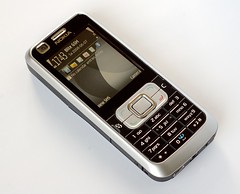 So, App Camp kicked off at about 6pm on Friday with a greeting from Andrius Kubilius, the prime minister of Lithuania, followed by Rimantas Žylius, the minister of economy. The politicians were wearing jeans and jackets, no ties already. Kubilius reminded us on numerous occasions that it's the XXIst century, confessed that he wouldn't be able to make a mobile app, and asked for an app that would solve the budget deficit issue. The MC commented that the PM is not as tech-naive as he presents himself, as he's using both and iPad and a Samsung Galaxy Tab, because, as he tells, the apps are different on these. Žylius reminded us that everything is possible, if even he could become a cabinet minister.
So, App Camp kicked off at about 6pm on Friday with a greeting from Andrius Kubilius, the prime minister of Lithuania, followed by Rimantas Žylius, the minister of economy. The politicians were wearing jeans and jackets, no ties already. Kubilius reminded us on numerous occasions that it's the XXIst century, confessed that he wouldn't be able to make a mobile app, and asked for an app that would solve the budget deficit issue. The MC commented that the PM is not as tech-naive as he presents himself, as he's using both and iPad and a Samsung Galaxy Tab, because, as he tells, the apps are different on these. Žylius reminded us that everything is possible, if even he could become a cabinet minister.Several short keynotes by foreign guests and local mobile community tycoons were followed by the app pitches. Each team had 60 seconds to present their idea to attract collaborators. Most of them have been pretty good, the presenters were successful in conveying their idea and getting people interested.
There were several recurring themes: 3 pitches for apps for fishermen, 3 pitches for loyalty system apps (with the promise of ridding your wallet of all these loyalty cards), a coulple of GPS adventure games geared to get geeks of their monitors, a couple of variations on the where to go for lunch theme.
Other app ideas that I found noteworthy: an egg cooking simulator for small kids, rules of the road reader & quiz, onboard Java IDE, location-based hitchhiking hookup, mobile app based on the sviesoforai.lt traffic congestion IS, a mobile app to report places of environmental concern for green NGOs to take care of, GPS taxi meter to tell if you're getting ripped off, a mobile confession app that uploads the audio to a CMS for a priest to listen to and grant penance over the air. A game to learn the map by navigating Lithuania and Europe by choosing the direction by the names of the adjacent towns. The prize for the best pitch (Samsung Galaxy S II) was awarded to the guy operating a clothing swap web site, who promissed his collaborators access to a database of 100k girls in Lithuania with names, profile photos, clothes sizes, and contact details :) That's the team I joined!
Then there was time for networking over soft drinks and light snacks. Later, beer appeared, too. It appeared that a lot of the app ideas were proposed by marketers willing to promote the idea and looking for devs to implement it for free. Undecided developers were floating from one circle to the next, looking for a good app idea to invest their weekend in.
My clothes swap team consists of 4 developers and a designer. At 9am on Sunday the development began with brainstorming over coffee and cinnamon buns. We were driven off the premises at 10pm. We have a working app with the main functionality fleshed out, but perhaps it's too early for screenshots yet. If interested, the code is on GitHub: https://github.com/alga/AppCamp16. My team mates who have some iOS experience, but have not dealt with Android before, commented how easy developing for Android is.
 The whole event is held in the airy, light, inspiring spaces of the National Gallery of Art, one of my favourite buildings of all. The venue was a substantial factor in my decision to come and participate. I'm very glad I came, and not only because of the building. I'm looking forward to the next day (which is quite soon already, time to catch some sleep!)
The whole event is held in the airy, light, inspiring spaces of the National Gallery of Art, one of my favourite buildings of all. The venue was a substantial factor in my decision to come and participate. I'm very glad I came, and not only because of the building. I'm looking forward to the next day (which is quite soon already, time to catch some sleep!)



